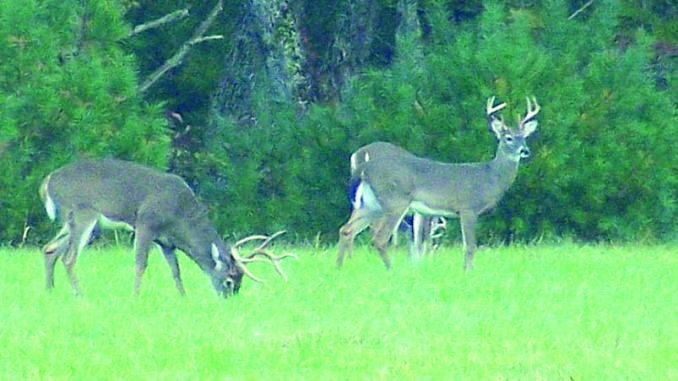
One of the most-important facets of keeping and growing quality deer on any property is providing areas where deer are safe from harm and human intrusion. Some properties manage this by their proximity to adjacent properties that do not get hunted or are restricted from hunting. Other properties may designate and set aside sanctuary land that is prohibited from hunting.
“We have designated as much as 1,000 acres of our property to deer sanctuary,” said Mike Noles, owner of Conman’s Guide Service in Creswell. “We don’t go into our sanctuaries for any reason other to maintain supplemental food plots (and) mineral stations or let wildlife photographers come in and take pictures.”
Biologist Jason Parker of Howell Woods said neighboring acreage provides cover for the deer that visit his property regularly.
“Howell Woods is located adjacent to a greenway along the Neuse River,” Parker said. “There’s somewhere in the neighborhood of 60,000 to 70,000 acres of forested private lands, and much of that is bottomland. It holds a lot of deer that will enter our property because of our food sources — namely corn-baited sites and some scattered 1-acre food plots that we plant with millet, sorghum, or clover. One new thing we have started this fall is to plant additional apple orchards on our property. We have one existing orchard now, and from the trail-cam shots around that orchard, we are seeing some really nice deer that like apples.”
Editor’s note: This story is part of the article titled Second time around in the December issue of North Carolina Sportsman magazine, now available on newsstands or in a new digital edition.




Be the first to comment